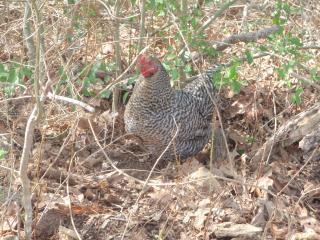Quote:
When confronted with a similar situation during the recent snow storms, I locked the "at risk" hens (in my case, it was two new hens who were new to the flock and not fully grown yet) in a large dog cage that I keep as a permanent part of my main henhouse.
That large dog cage has kept many problems in check over the last two years.
Anytime I have a bird that needs to be protected -- or one that needs to be isolated in order to protect the others -- I just put them in the dog cage for an appropriate length of time.
It doesn't work well for a situation where communicable disease is involved (for that, I have another large dog cage that I can set up in the garage).
But for any other situation where temporary lockup is needed, I prefer to lock hens (or roosters) up inside the main henhouse with their flock.
One thing -- an angry or bored, feathered inmate is more likely than most to knock over their food and/or water.
So I now have two large food cans (#10 cans -- the size that industrial kitchens get canned veggies in).
In one, I put some clean pebbles down in the bottom third of the can (to weight it down), then I pour clean water in the can. (Of course, I empty it out once a day at least, and put new clean water in there).
In the other can, I put sand in the bottom half of the can (again, to weight it down), and then put layer feed in the top half of the can. That provides more than enough food for even a rooster for a day.
Then after I lock up the bird, I always throw some treat -- like BOSS, for example -- in there on the floor, so that the feathered inmate will have something to scratch for.
Also, I have a small suet cage, and alot of times it has suet in it for their entertainment as well. Or else, I may give them a corn cob from the human's refrigerator to peck at.
 a picture of her!!
a picture of her!!



